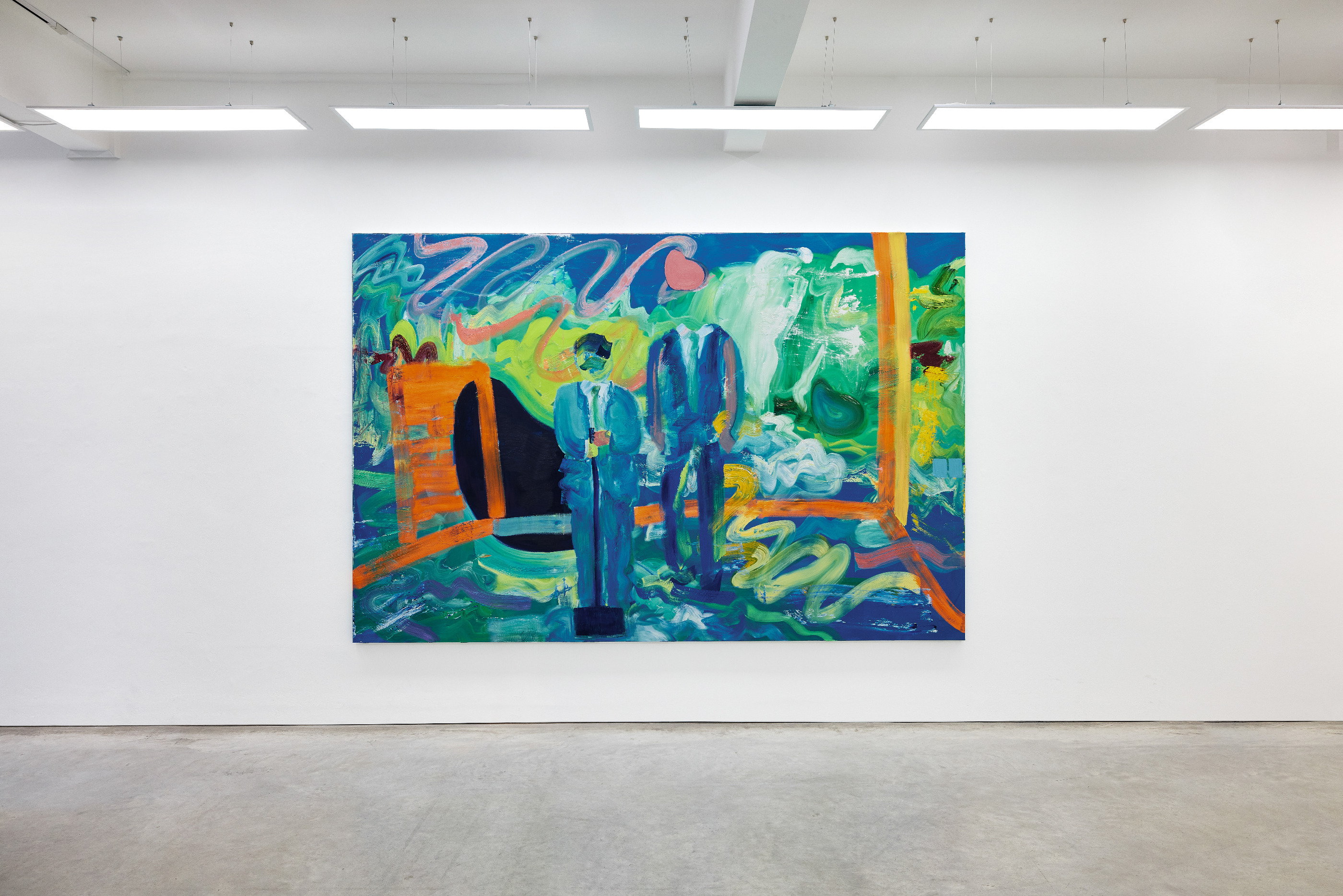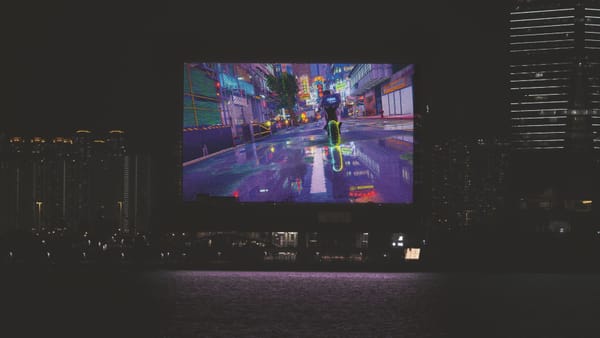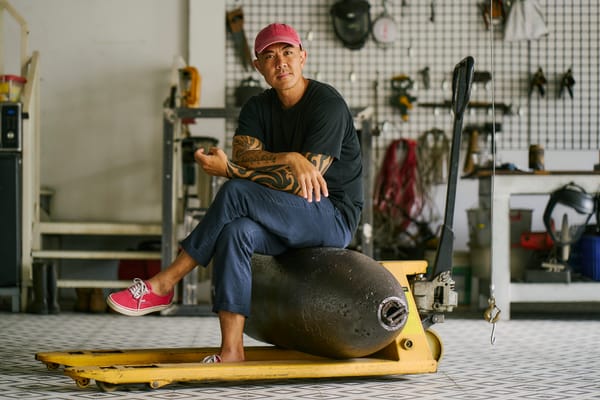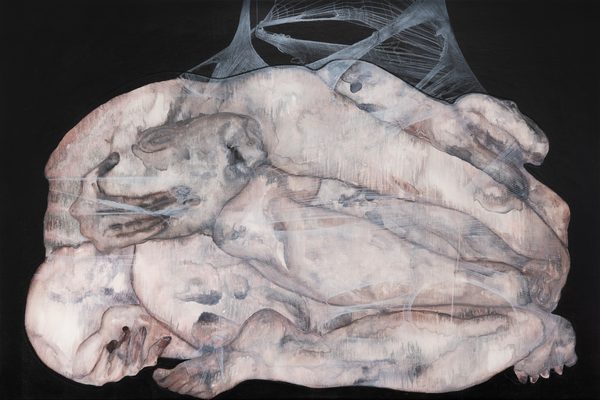People
Fluid Expressions: Interview with Channatip Chanvipava

Perhaps the ultimate symbol of fluidity, water shows up time and again in the practice of Channatip Chanvipava. Based in London, the self-taught Thai artist has been reckoning with his own fluidity for years, from his monumental change in career, after initially pursuing economics, to his sexuality. Tapping into these themes of identity and belonging, Chanvipava’s colorful, expressionistic paintings evoke that same mutability through wide, molten brushstrokes. ArtAsiaPacific’s Camilla Alvarez-Chow spoke to the up-and-coming artist about the autobiographical concepts that permeate his recent exhibition at Ronchini Gallery in London—“Wizards of Omaha,” which opened on September 10—and how his fixed past impacts his changing present.
Your artistic practice draws heavily on the autobiographical. How did your upbringing in a conservative, interfaith family influence your voice as an artist, especially as one who identifies as queer?
My family’s culture, values, and upbringing have significantly shaped my identity, providing me with meaning and perspective. My paintings are rooted in memory, exploring concepts of belonging and intimacy. Within my work, I convey different themes related to my identity such as queerness, which extends beyond my individual experiences. I feel that memories gain power when they are narrated and shared, and this is what I am trying to achieve through my painting.
You first pursued an education in economics before committing to the arts. Is there anything from the subject that has stuck with you and perhaps that you incorporate into your artmaking?
My time at the London School of Economics made me highly analytical. The micro- and macroeconomic principles I learned there have impacted the way I see and process the world. In a way, this analytic approach is directly linked to how and what I paint: using memory, autobiography, and identity, focusing on the individual, all of which are “micro” elements, but which I use to express shared themes and concepts that resonate with a collective experience, on a “macro” level.

Your upcoming exhibition at London’s Ronchini Gallery has a very curious name, “Wizards of Omaha.” The famed American businessman, investor, and philanthropist Warren Buffett was dubbed the “Oracle of Omaha” for his very successful practices. Could you explain where this title comes from and what it references?
The title of this exhibition draws inspiration from the wisdom and values imparted on me through the readings of two highly respected, humble individuals, Warren Buffett and his business partner Charlie Munger, the former of whom is famously referred to as the “Oracle” or “Wizard of Omaha.” This show represents my journey in reconciling my past with and arriving at a deeper truth. It’s about reflecting on a time in my life when I had not yet embraced my identity as an artist and exploring what that means to me now.
The exhibition features four core paintings, most titled after quotes from the Wizard of Omaha and the late Charlie Munger. These are complemented by a selection of smaller works which expand on these themes. Combined, “Wizards of Omaha” is my way of making sense of my evolving identities. I believe we are always changing and evolving, whether in our relationships, environments, age, sexuality, or in this case, profession. I think it is important to understand the changes happening around us and, more importantly, the changes within ourselves. Everything happens for a reason.
.jpg)
You are a self-taught artist and developed your own painting practice, but you also studied at the Royal College of Art (RCA) in London. Why did you feel the need to further your artistic education formally and what did you gain from that experience?
I enrolled at the RCA because I wasn’t allowed to pursue art when I was younger. I was curious about the experience of art school and had a lingering fear that I wouldn’t be able to progress professionally without a formal education.
However, during my time at the RCA, I realized the importance of maintaining the integrity of my self-taught background. I was determined not to become a mere product of the school but rather to remain independent of it. I am deeply committed to staying true to my process and preserving the authenticity of my work. While I hold great respect for education and academia, I believe that the path to becoming an artist varies for each individual, and formal schooling is not part of mine. My time at the RCA was essential in helping me realize this.
I draw inspiration from concepts introduced by [or related to] Jean Dubuffet, such as folk art and art brut, and the works of other self-taught artists who came before me, such as Frida Kahlo, Henri Rousseau, and Vincent van Gogh, to name a few.
The concept of memory features prominently in your works. Memories can be fickle and are never as accurate as we may think. Is this element another facet you explore in your works?
I always paint from memory, and my practice naturally explores the subjectivity of memory. The varying degrees of sharpness in recollection create a tension that allows me to navigate between abstraction and figuration in my painting.

You’ve mentioned in previous interviews that there is “no prior sketching, physical markings, or experimentation” in your painting. You just dive into a painting until its completion, then move on to the next. As your works are “archived” memories, made in the moment with your rawest emotions, have you ever stepped away from the work and then found your emotions or perceptions have changed about that particular memory?
The act of painting is spontaneous, but the preparation for it beforehand can take hours, days, months, or even longer. I choose not to sketch, experiment, test colors, or use physical references, because I prefer to transfer a mental and internal depiction directly onto the canvas from the start—it feels more honest and sincere.
I always step back and walk around a painting. I also remind myself that the paint needs to “breathe” between layers and colors. This rhythm of stepping away helps me control the merging and blending of colors as they dry over time.
Memories have attached emotions, and these typically don’t change while I am working on a particular piece. However, if I experience a shift in feeling, I don’t resist; I allow the change to happen naturally.
The colors teal and blue, with accents of coral to contrast the cool hues, are ones that you gravitate toward in “Wizards of Omaha.” As colors function as pure expression of emotions, what do these colors represent to you?
I select colors based on what I am trying to explain, express, and depict. The choice of color stems from finding a connotation or association, whether that be literal, emotional, or sentimental. The decision-making process for color happens very quickly. I can recognize and establish different ways to connect with color and manipulate it to enhance meaning.

Your wide, fluid brushstrokes bring to mind an image seen from the water's surface—everything’s distorted. Your recent showcase “The Sound of Many Waters” in Venice hints that water was also an important motif, and your recent painting, Swimming Naked (2024), references this as well. What is it about the element of water that inspires you?
My brushstrokes are distinctive and present in every painting, and it is difficult or near impossible for me to deviate from it.
Water is symbolic to me, representing many things and charged with various meanings. My previous show “The Sound of Many Waters” explored the different qualities water embodies, including reflection, fluidity and its intrinsic connection to Venice.
In “Wizards of Omaha,” water is depicted in two paintings, one of which is titled Swimming Naked in reference to the quote from Warren Buffett: “When the tide goes out, you discover who is swimming naked.”
Do you have any upcoming projects that you are looking forward to?
I leave the day after the opening at Ronchini Gallery for Dragon Hill, an artist residency in the south of France that is organized by ArtReview and Unit Gallery.
Camilla Alvarez-Chow is an editorial assistant at ArtAsiaPacific.







